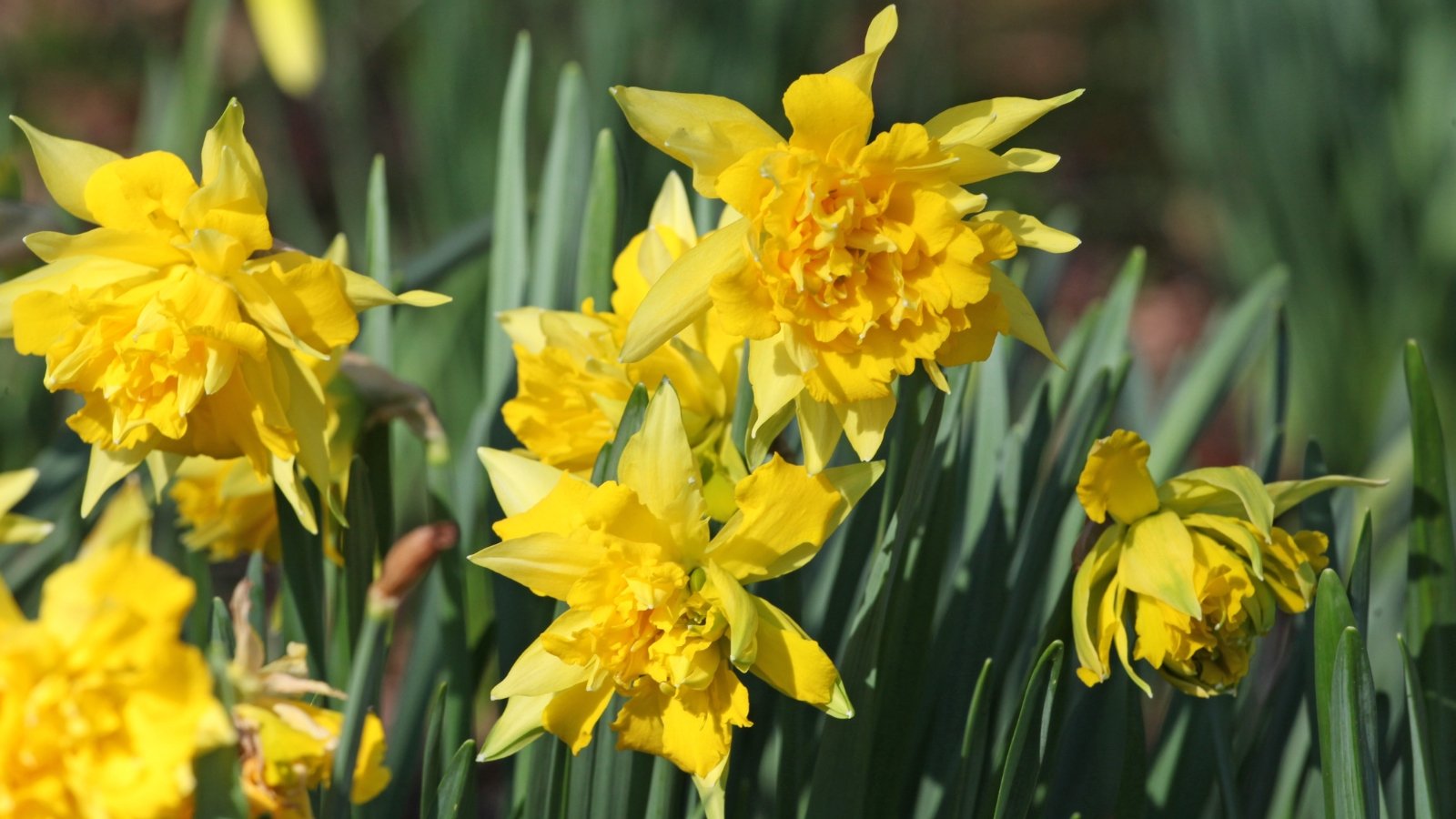[ad_1]
Daffodils are a standard flower, instantly recognizable by their vivid color and quintessential type. Even non-gardeners can conjure up the image of an iconic yellow trumpet after they hear the phrase “daffodil”.
Nonetheless, it doesn’t take so much digging to grasp that the steady yellow trumpet is solely the tip of the daffodil iceberg! There are roughly 32,000 registered daffodil cultivars, although solely about 10% of them are commercially accessible for gardeners.
There are tens of millions of unusual daffodil varieties, that features almost every combination of type, color, and dimension. From double-flowering to separate coronas, and from peachy pinks to inexperienced (positive, inexperienced!) petals, there’s an astonishing amount of variation sprouting from this simple bulb.
Study on and check out a couple of of those lesser-known daffs!
‘Albatross’
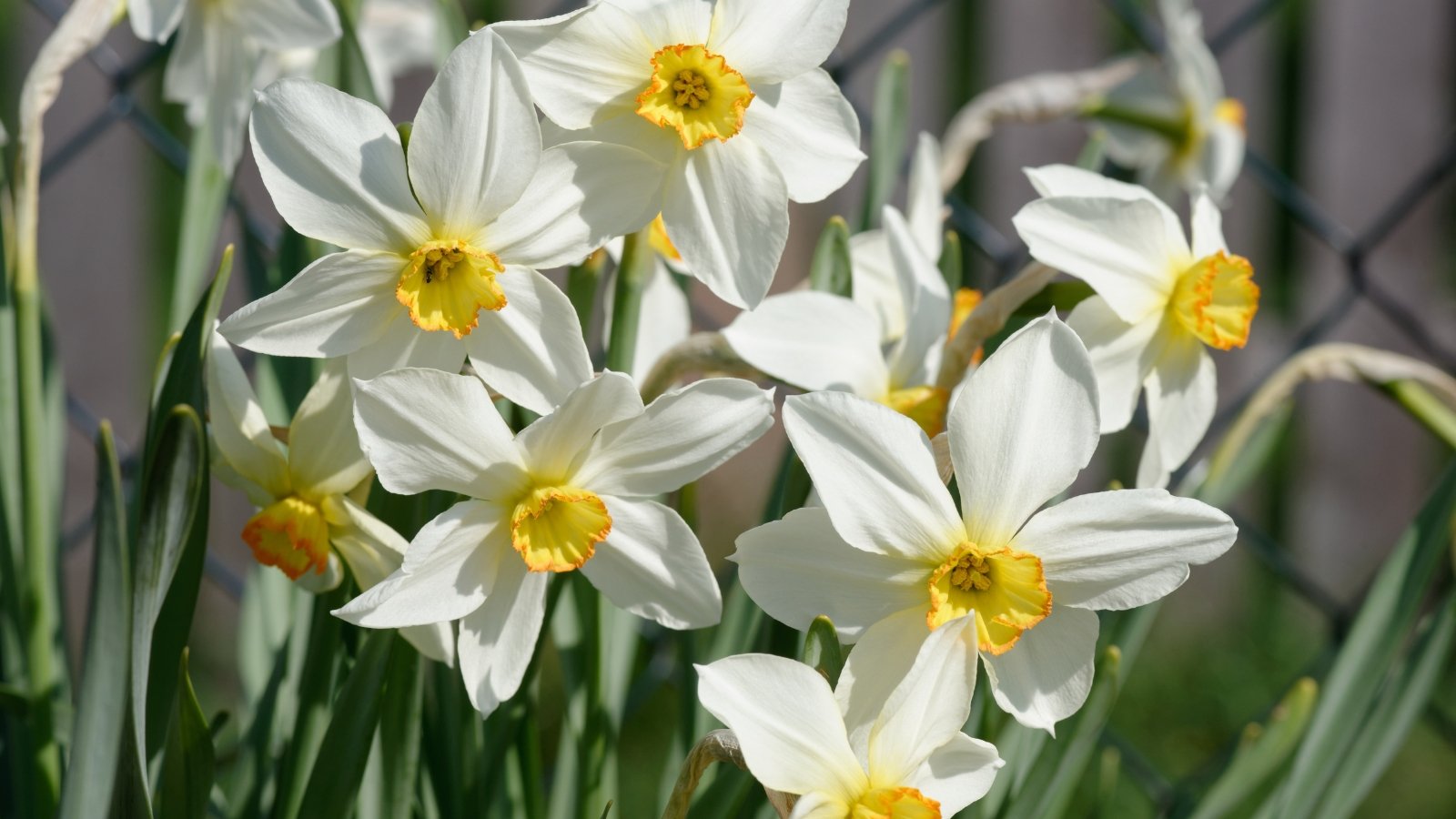

‘Albatross’ is an heirloom choice in every sense; this daffodil has been spherical given that 1890’s! This unusual daffodil features a frilled, orange-dipped central cup surrounded by propeller-like outer petals. Instead of overlapping, the outer petals are barely gapped. ‘Albatross’ is a relatively tall choice, standing 18-20 inches extreme, and may very well be well-suited as a scale back flower or planted within the midst of a mixed yard mattress. This daffodil blooms in mid to late spring.
‘Apricot Whirl’
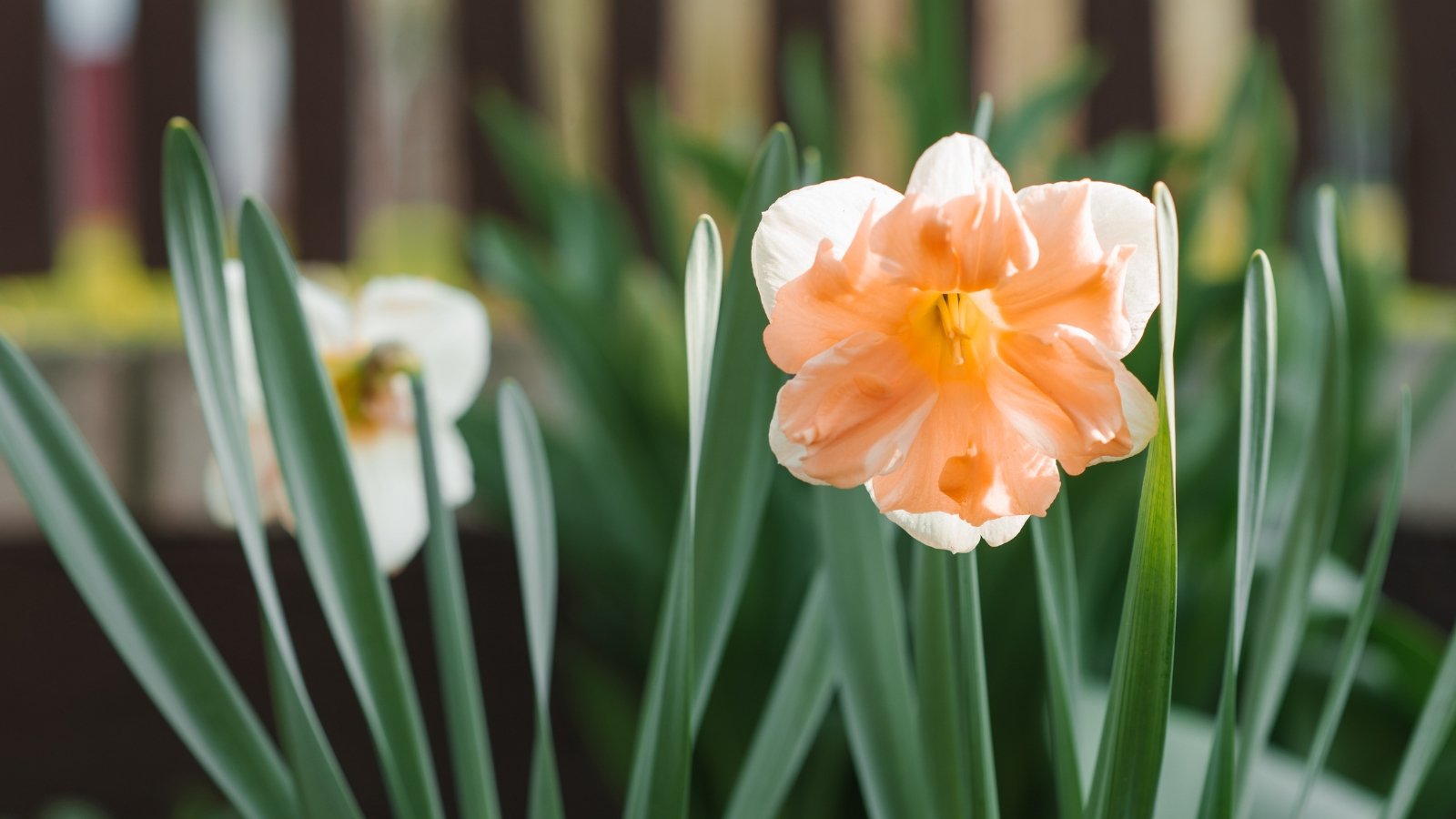

‘Apricot Whirl’ features a deeply ruffled center in shades of warmth peach and coral, surrounded by creamy white outer petals. ‘Apricot Whirl’ is taken under consideration a butterfly or break up corona variety of daffodil, which means the center cup (corona) is break up better than half its measurement.
The massive, 3-4-inch big blooms open in mid spring. Mix ‘Apricot Whirl’ with totally different peachy-hued daffodil varieties like ‘Bellabombe’, described beneath, for pretty spring bouquets and preparations.
‘Boaz’
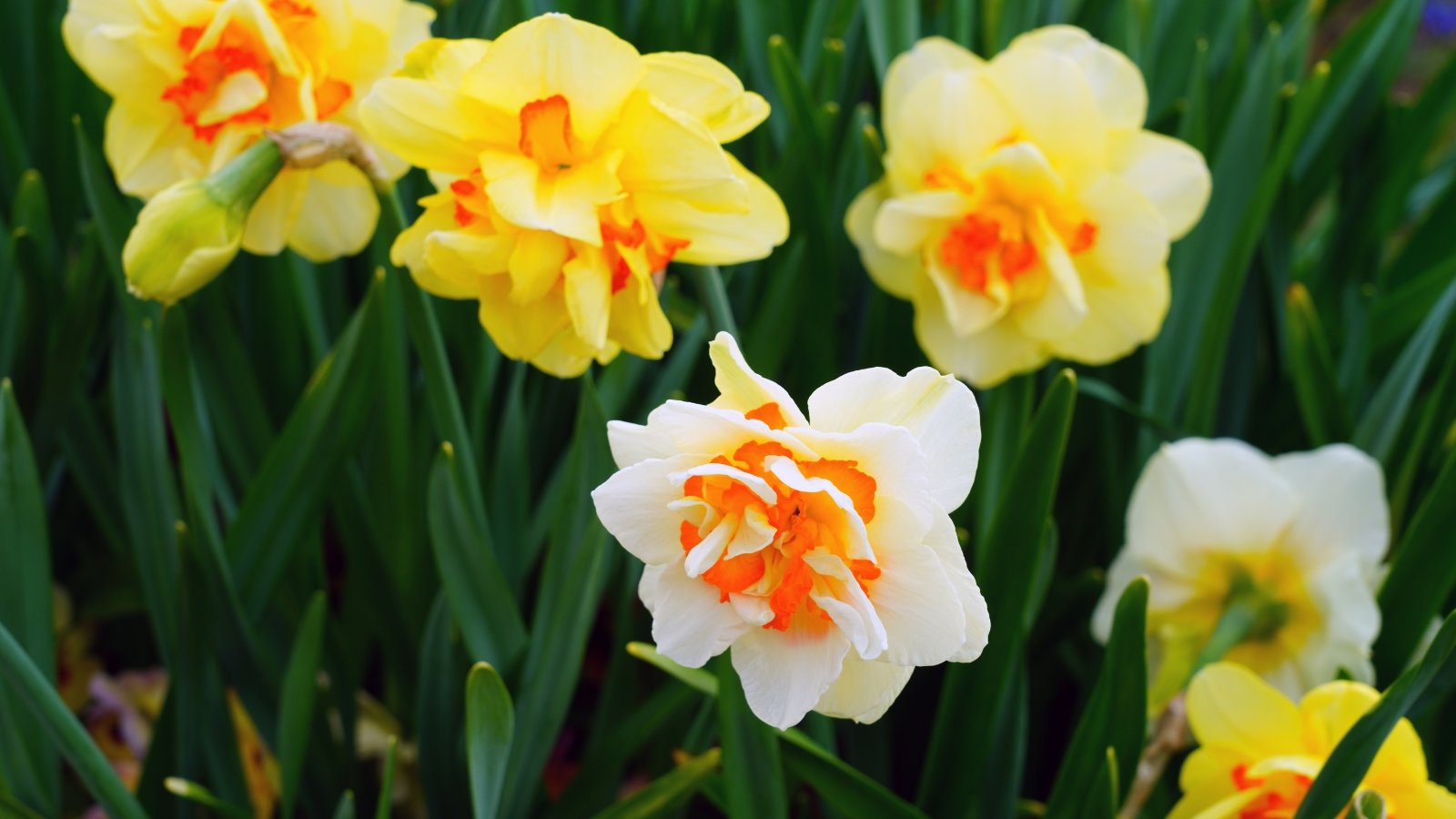

Hardly is a daffodil choice listed as “orange” so, successfully, ORANGE. ‘Boaz’ has yellow-orange outer petals surrounding a daring, copper orange center. This double-flowering choice has layers of petals that make up 4-inch big blooms. ‘Boaz’ blooms in mid spring and normally stands spherical 18 inches tall. Plant it with equally vivid orange types of tulip, like ‘King’s Orange’ or ‘Daydream’.
‘Can Can Girl’
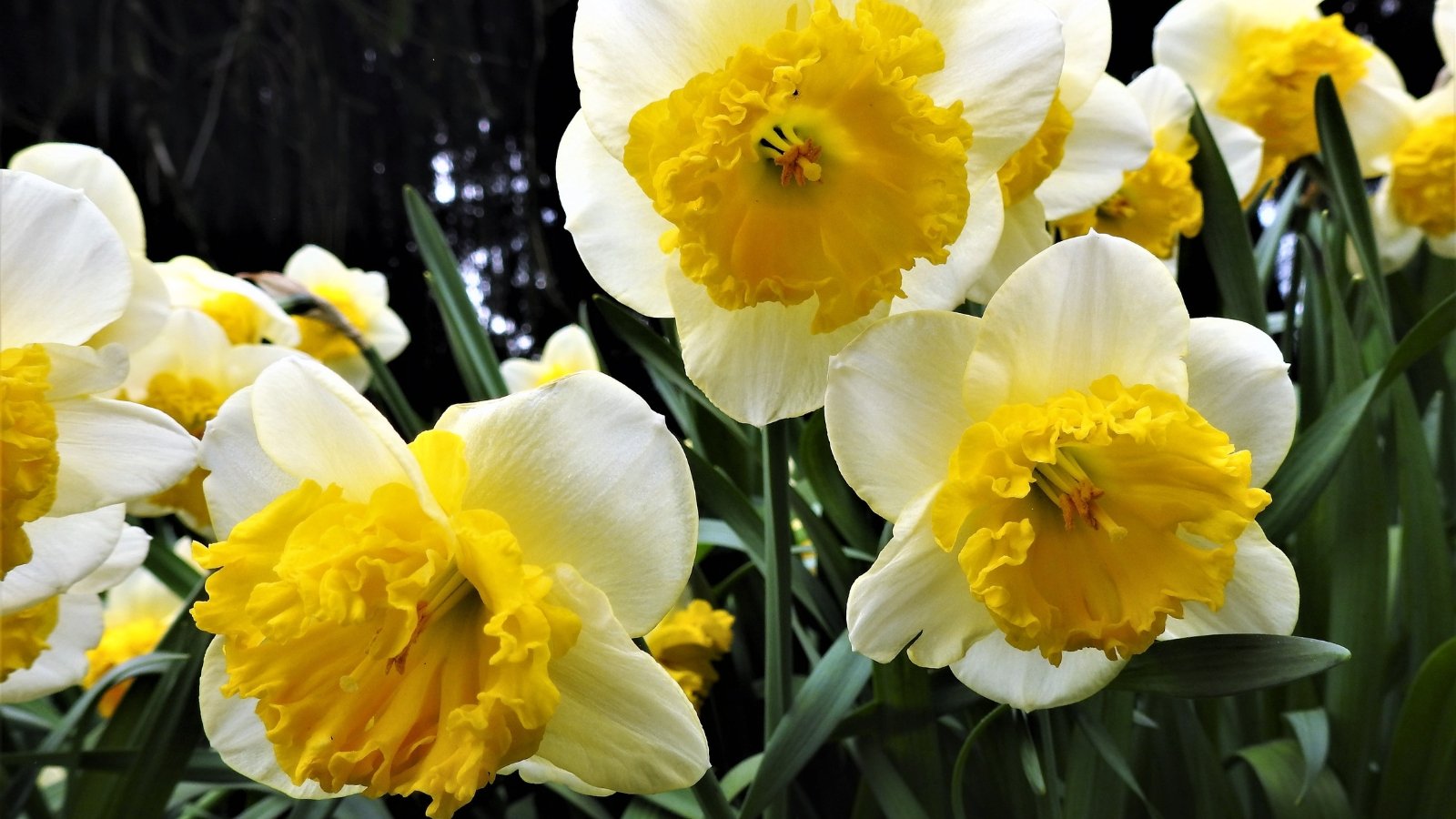

With its golden, ruffled center paying homage to an imposing lion’s mane, ‘Can Can Girl’ is a selected showstopper. This huge-cupped choice has simple white outer petals surrounding a yellow, carefully frilled, ring-like center.
‘Can Can Girl’ is an excellent scale back flower, as a result of it retains its golden yellow ruffles even after the outer white petals have pale and dropped. This daffodil stands 14-18 inches tall and blooms in mid spring.
‘Chromacolor’
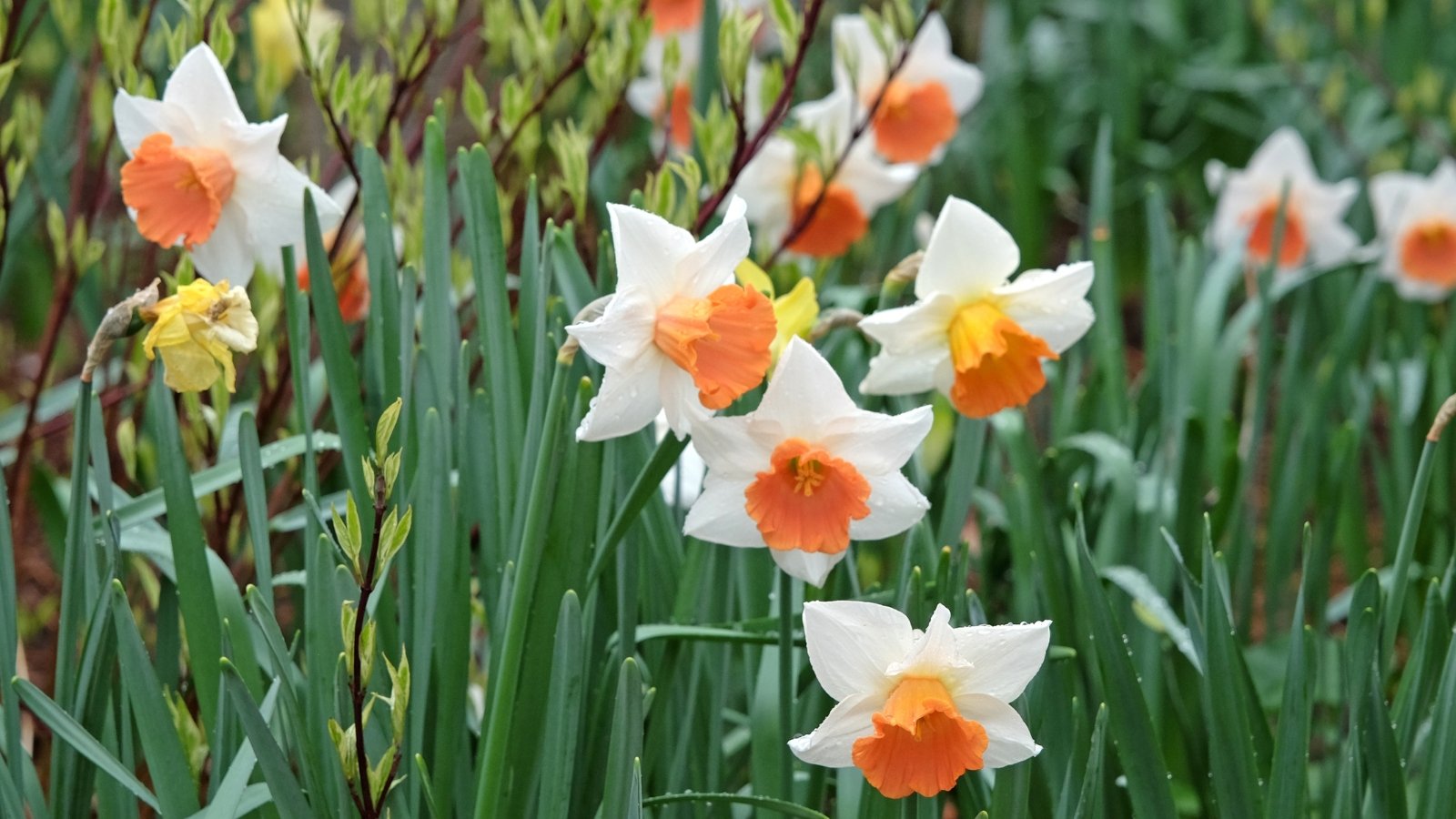

A daffodil worthy of its determine! The massive-cupped ‘Chromacolor’ boasts huge, 5-inch big blooms. Outer petals are vivid white and the within cups are an iridescent, coral pink. A unbelievable scale back flower, this engaging choice is nice for spring bouquets and preparations. As with totally different pink daffodils, ‘Chromacolor’ benefits from partial shade to help develop its coloration — direct, full photo voltaic can bleach pink hues.
‘Firebrand’
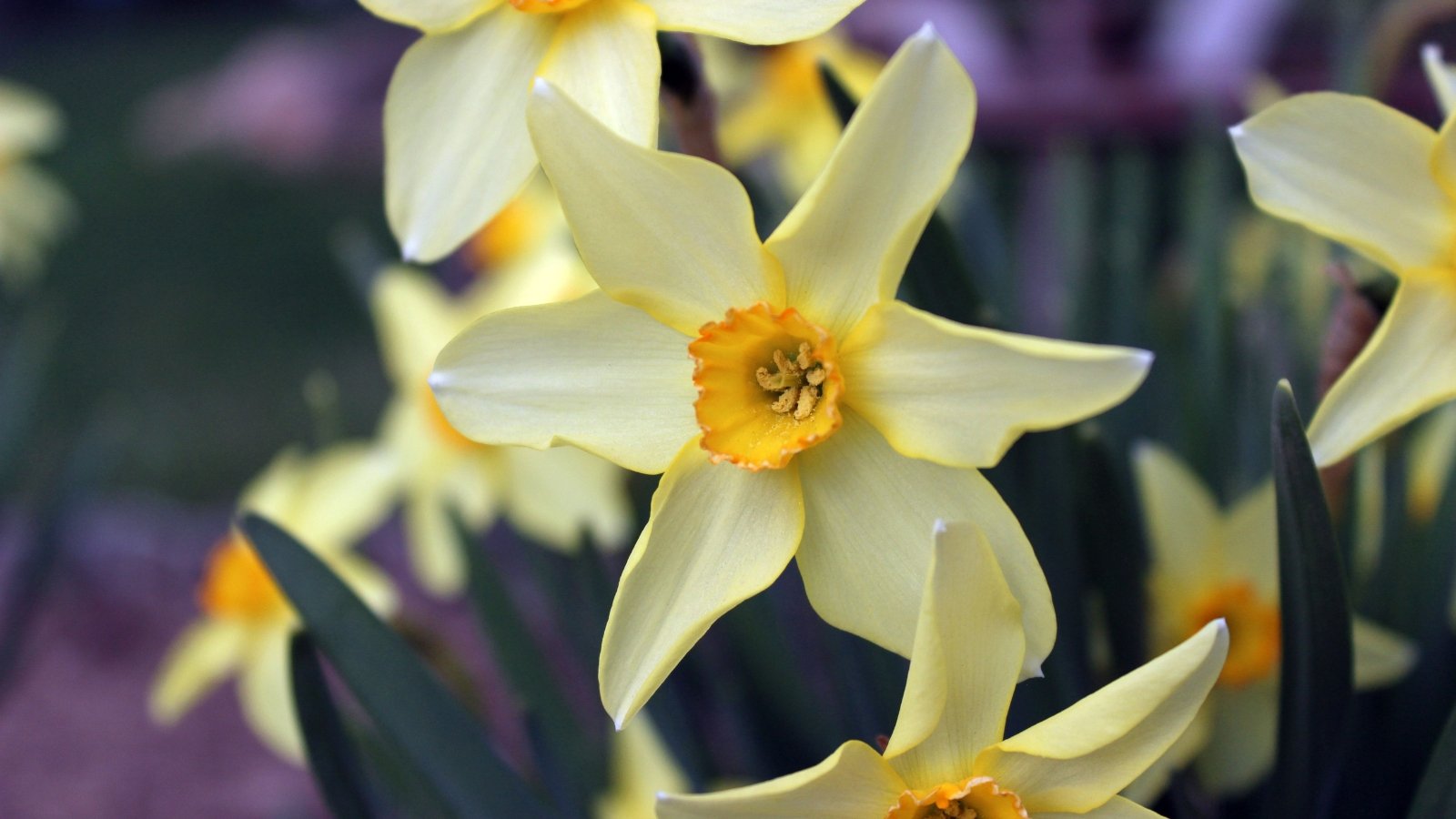

The distinctive and trendy star-like blooms of ‘Firebrand’ operate six slender, ivory white petals that embody a vivid orange center cup. ‘Firebrand’ is a unusual heirloom choice standing 18-20 inches tall. This choice blooms in in early to mid spring. Try pairing it with totally different early bloomers like Glory-of-the-snow or crocuses.
‘Irene Copeland’
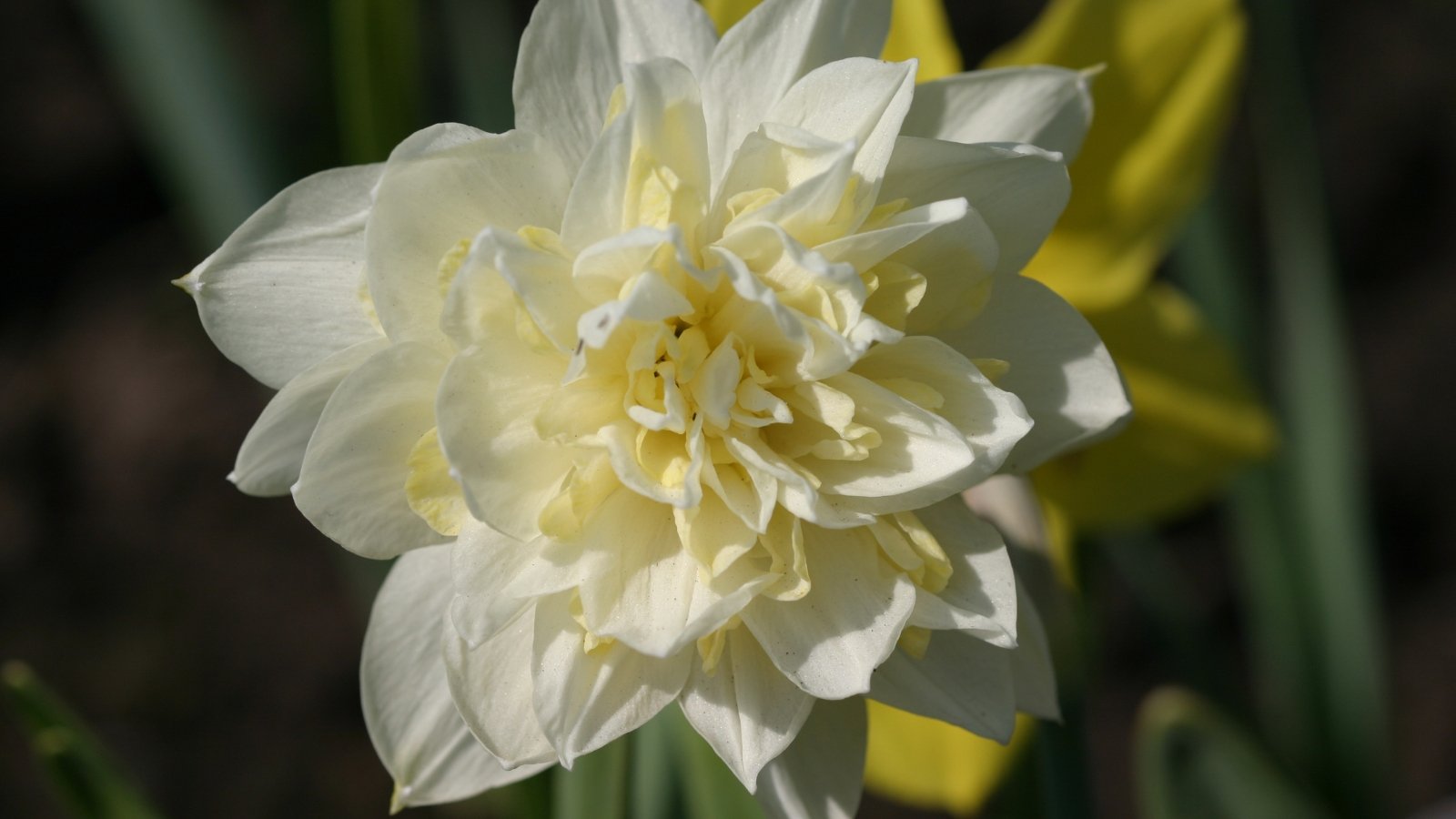

‘Irene Copeland’ choices luxuriant 3.5-inch big blooms that virtually seem like prized peonies. This double-flowering choice stands 14-18 inches tall and blooms in mid spring. Alternating layers of ivory and lemon yellow petals make this choice important for spring floral preparations and bouquets.
‘Itzim’
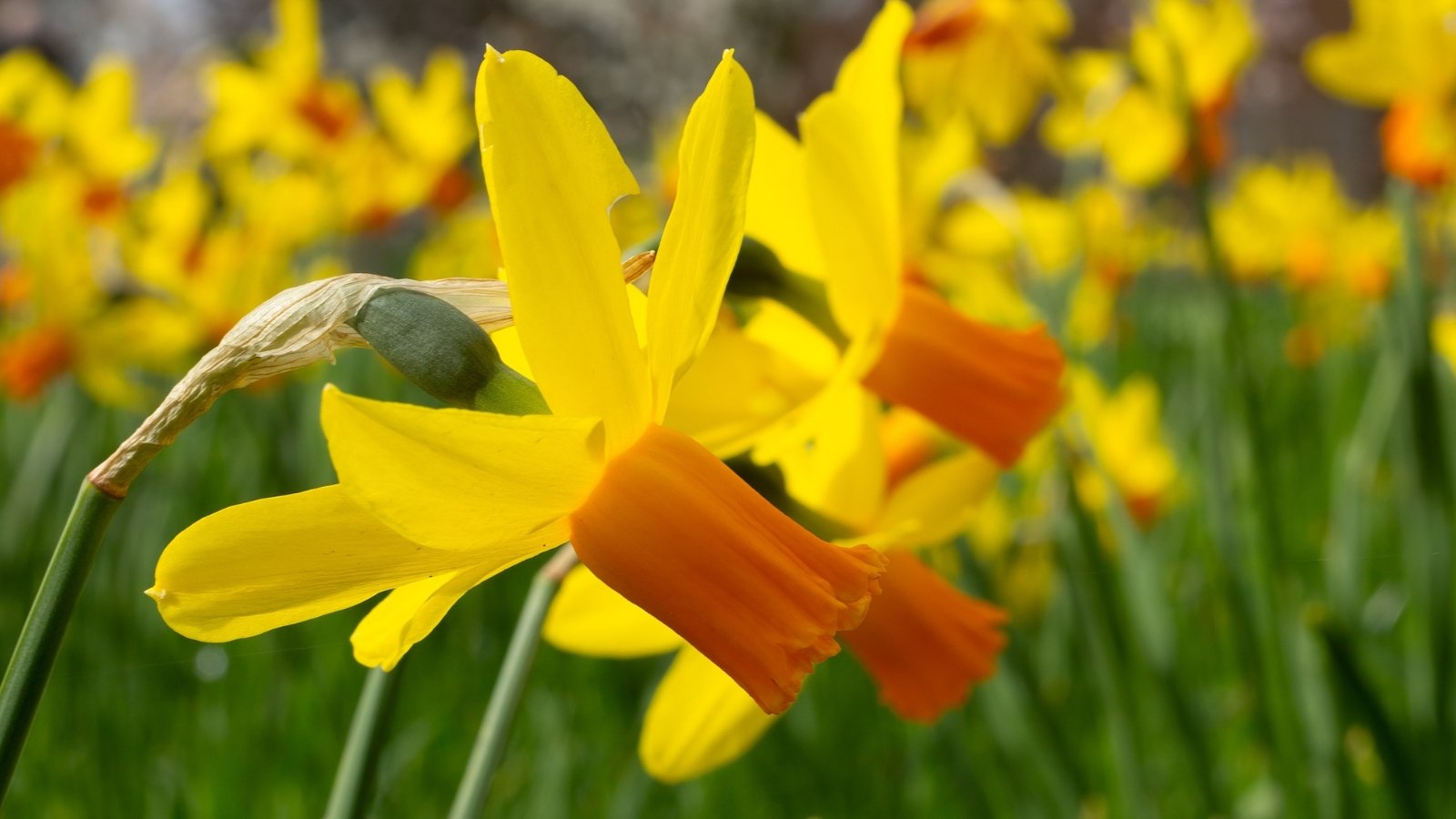

‘Itzim’ is a cyclamineus daffodil, which are recognized for his or her swept-back, downward coping with flowers that sort acute angles with the stem. Cyclamineus daffodils can tolerate shady locations and heavier soil larger than most totally different varieties. ‘Itzim’ has prolonged, golden, trumpet-like cups surrounded by vivid canary-yellow outer petals.
‘Itzim’ is on the small end of daffodils, standing merely 8-12 inches tall. Its smaller stature makes this an distinctive choice for planters and containers. Blooming in early spring, ‘Itzim’ would pair successfully with totally different early spring bulbs like purple and yellow crocuses.
‘Jayne Mansfield’
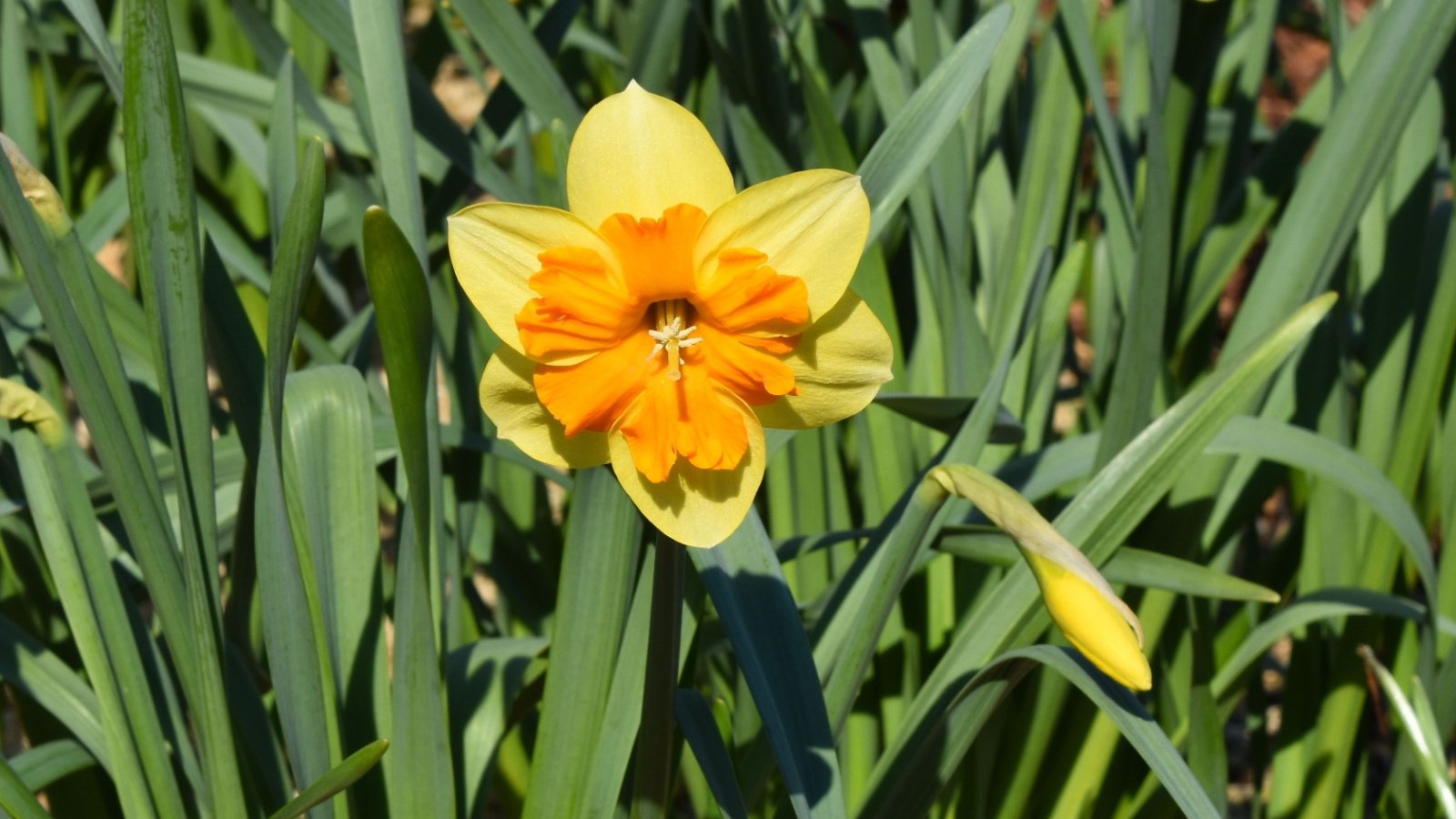

Aptly named after an icon of the Hollywood Golden Age, ‘Jayne Mansfield’ is a shocking split-corona variety daffodil. Warmth, buttery yellow outer petals embody swept-back, pale peach inside ones. Every inside and outer petals darken as a result of the blooms age. The within petals are barely wavy, together with texture to an already pretty, distinctive flower. ‘Jayne Mansfield’ blooms in mid spring. Plant these bulbs in drifts close to pathways and alongside border edges so their two-toned blooms may very well be admired up shut!
‘Julia Jane’
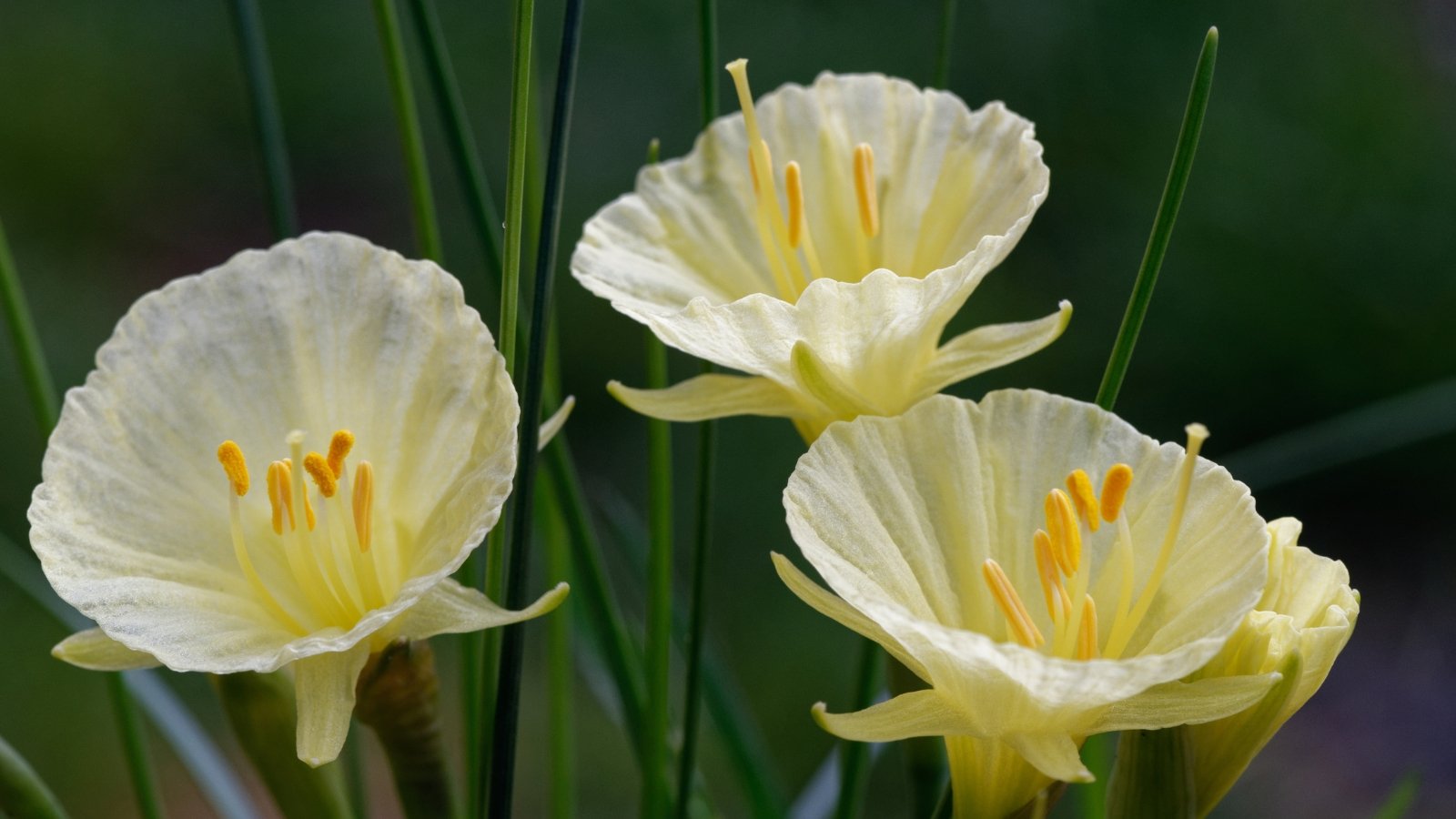

‘Julia Jane’ is a kind of Narcissus romieuxii, which are commonly known as “petticoat daffodils” in reference to their sweeping, hoopskirt-shaped flowers. Native to the mountains of northern Africa, these unusual daffodils are good for alpine rock gardens, meadows, naturalizing, and even containers. Of their native habitat, N. romieuxii prefers dry conditions and sharply-drained soil.
‘Julia Jane’ has paper-thin petals in pale lemony yellow, and slender, grass-like foliage in darkish inexperienced. This enchanting daffodil pairs successfully with totally different petite spring flowering bulbs like crocuses and grape hyacinth.
‘Pink Parasol’
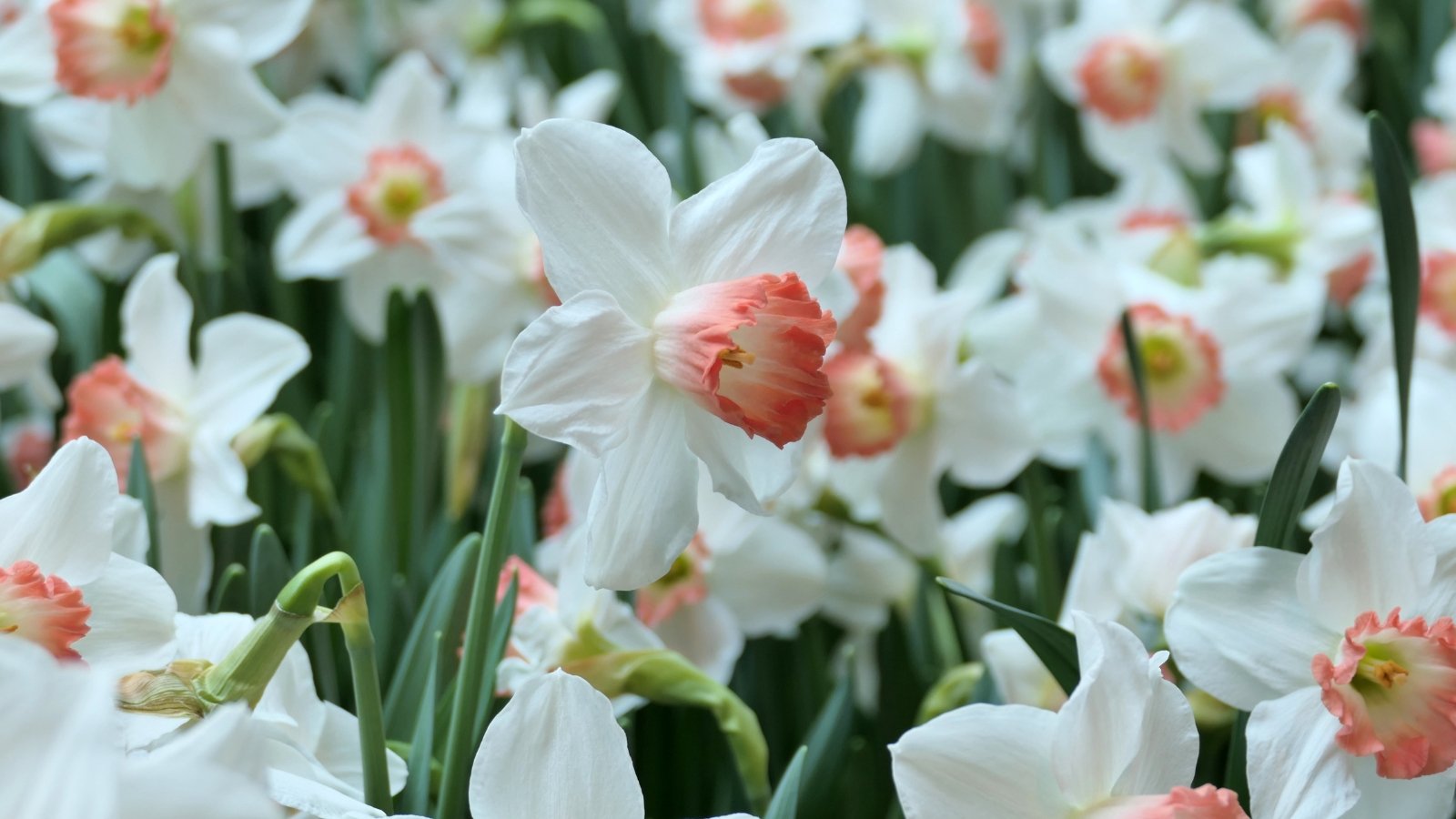

‘Pink Parasol’ choices rosy-pink fluted services surrounded by lovely ivory petals. This romantic daffodil is gorgeous in floral preparations and mixed yard beds. Pair with equally elegant pale pink tulips, like ‘Menton’ or ‘Angelique’. ‘Pink Parasol’ blooms in mid to late spring.
Temperature can have an effect on merely how “pink” the central cup can appear. Gardeners in hotter climates could even see deeper pink hues, whereas daffodils planted in cooler climates might appear further coral-orange.
‘Polar Hunter’
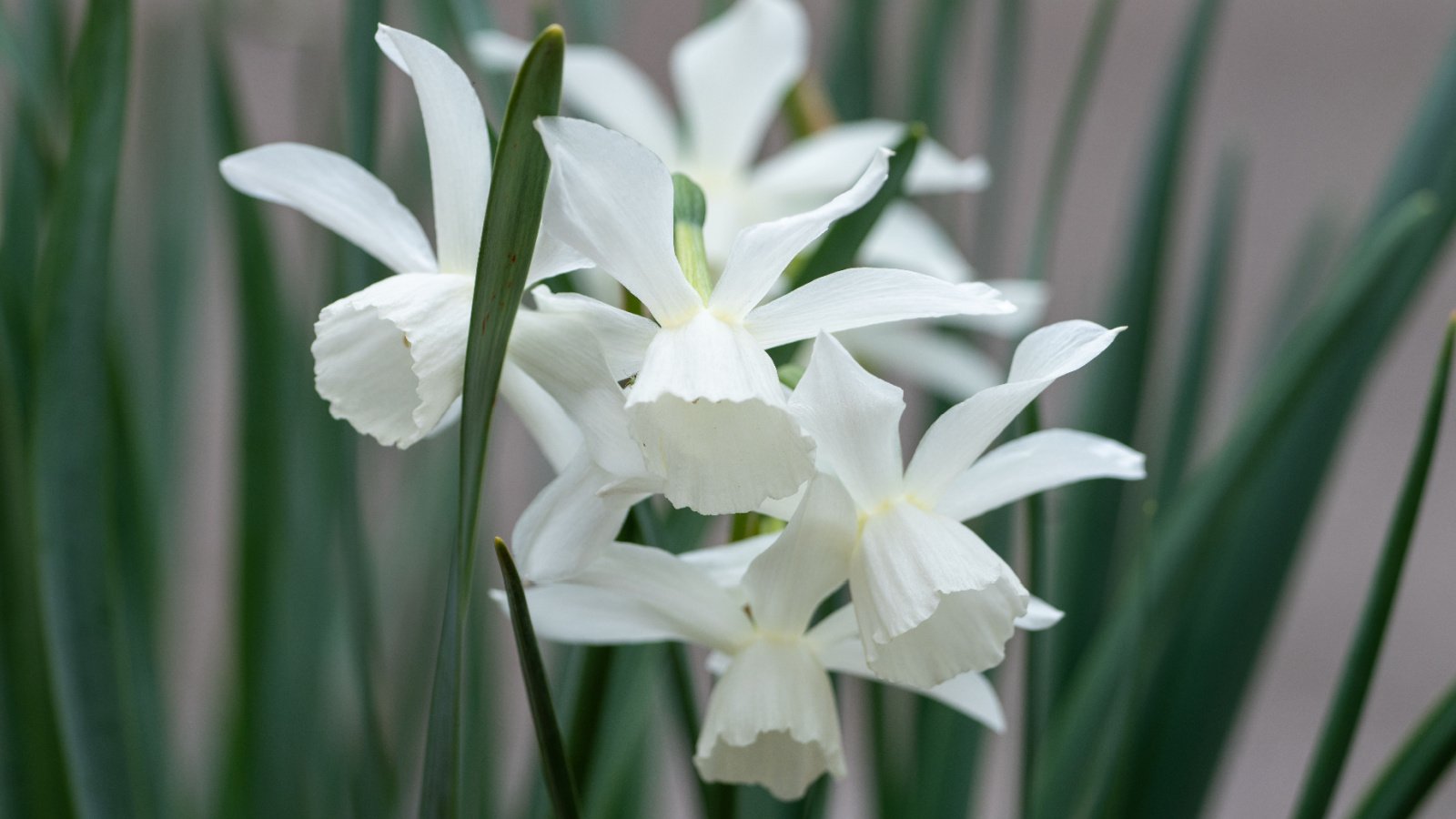

This engaging daffodil is the outcomes of crossbreeding spring-flowering N. jonquilla with fall-flowering N. viridiflorus. Blooms open vivid chartreuse, then slowly mature to virtually white. Each stem yields as a lot as 4 flowers. When planted en masse, ‘Polar Hunter’ appears as a lush carpet of inexperienced and white.
Whereas not as cold-hardy as most daffodil varieties, ‘Polar Hunter’s unusual coloration and tolerance of warmth temperatures makes it good for southern gardens.
‘Pom Pom Rose’
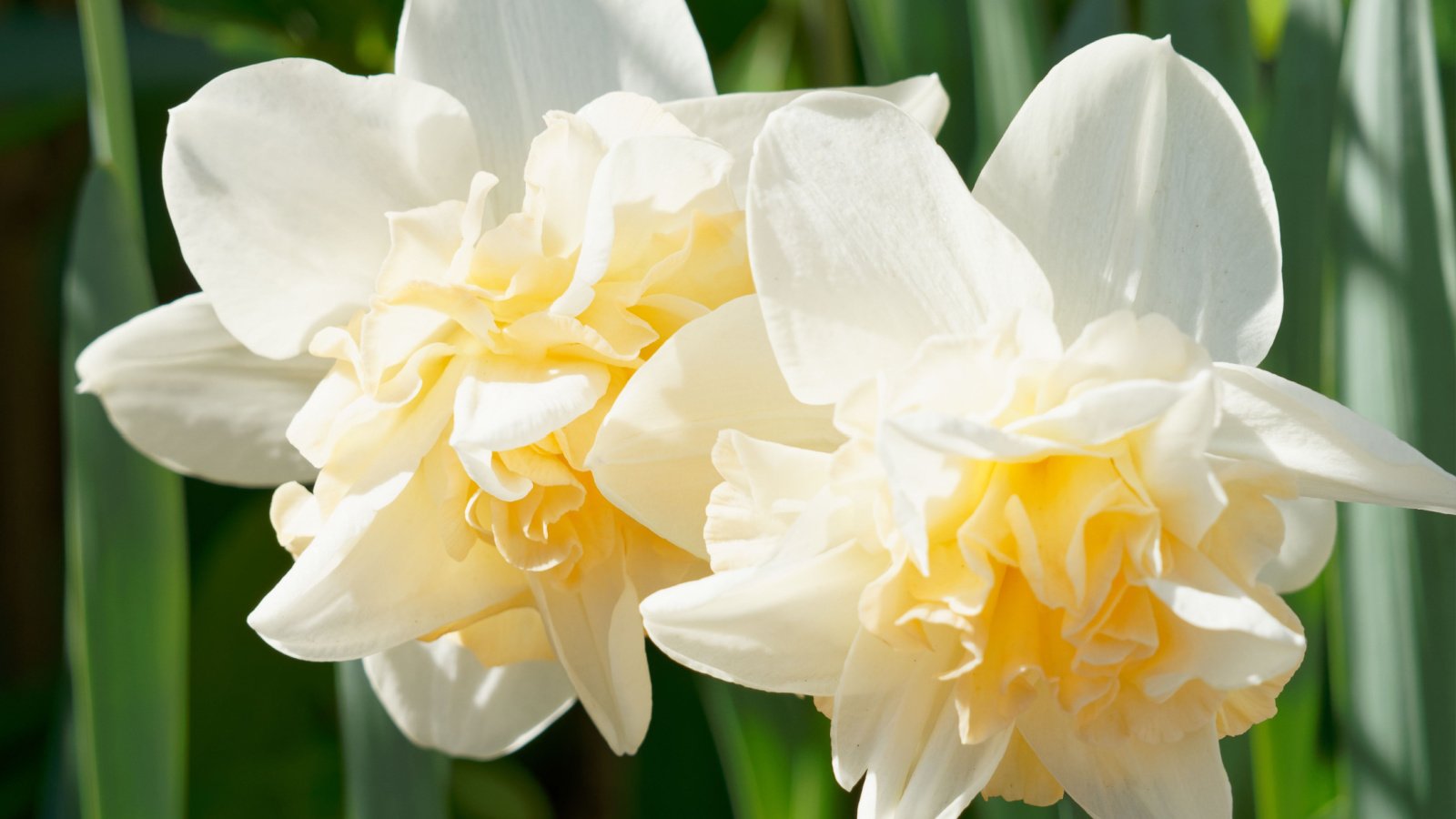

‘Pom Pom Rose’ doesn’t look one thing like the usual trumpet daffodils. This distinctive double-flowering daffodil has ruffled layers of peach and ivory, giving it a very lush, romantic vibe. The innermost petals usually have a faint contact of inexperienced. ‘Pom Pom Rose’ blooms in early to mid spring. Plant a batch of these bulbs with some tulips in planters, for a chic spring container yard.
‘Rip Van Winkle’
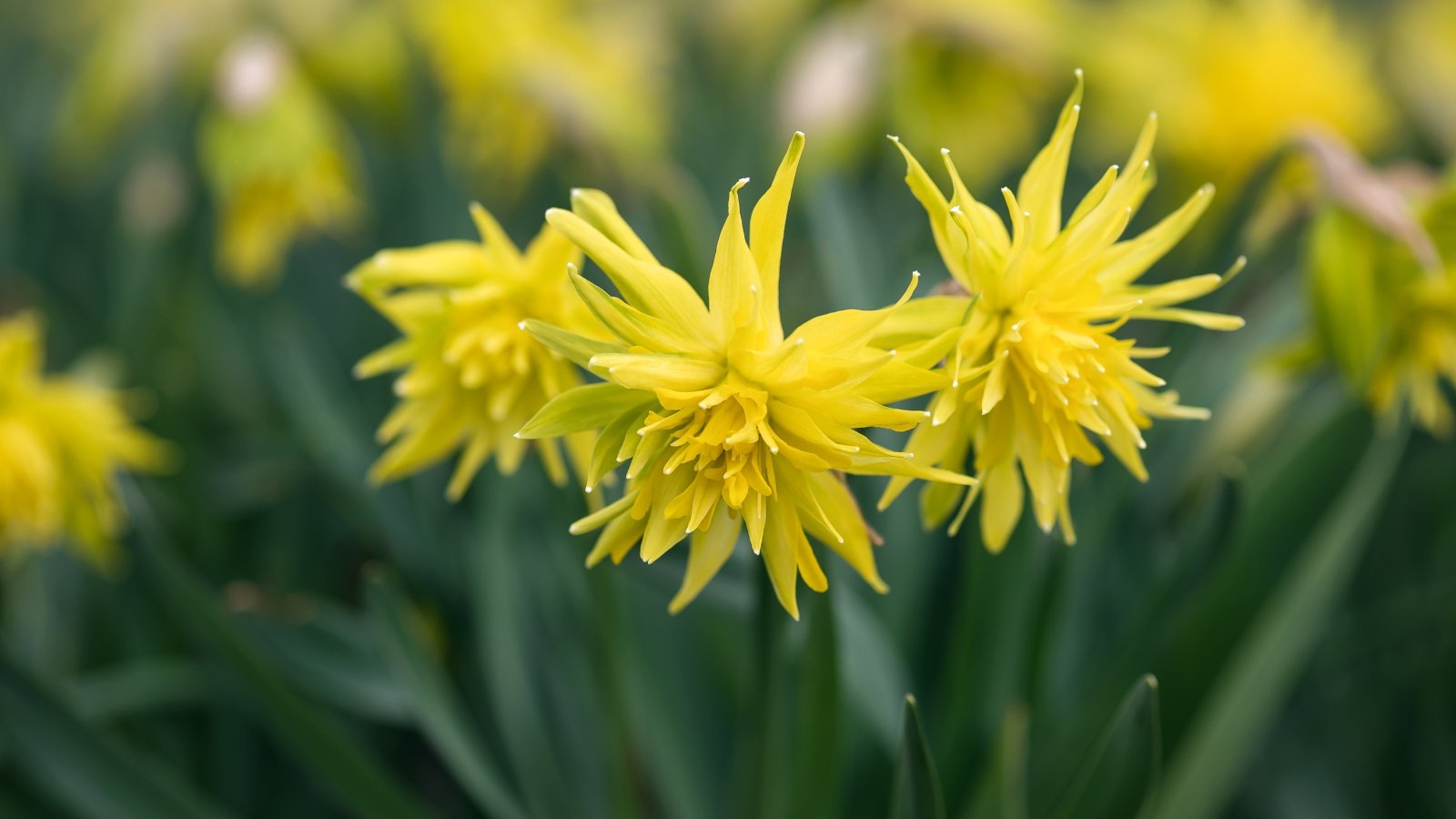

With its spiky, barely twisted petals, ‘Rip Van Winkle’ appears further like a cactus dahlia than a daffodil. This heirloom choice has vivid, sunshine yellow flowers. ‘Rip Van Winkle’ will also be a double-flowering daffodil that opens in early spring.
Plant ‘Rip Van Winkle’ on the doorway of borders or in containers for among the finest and largest have an effect on. These petite beauties stand merely 8-10 inches tall. Having enjoyable with ‘Rip Van Winkle’ as a scale back flower? For among the finest presentation, double-flowering daffodils should be picked when blooms are utterly open.
‘Sinopel’
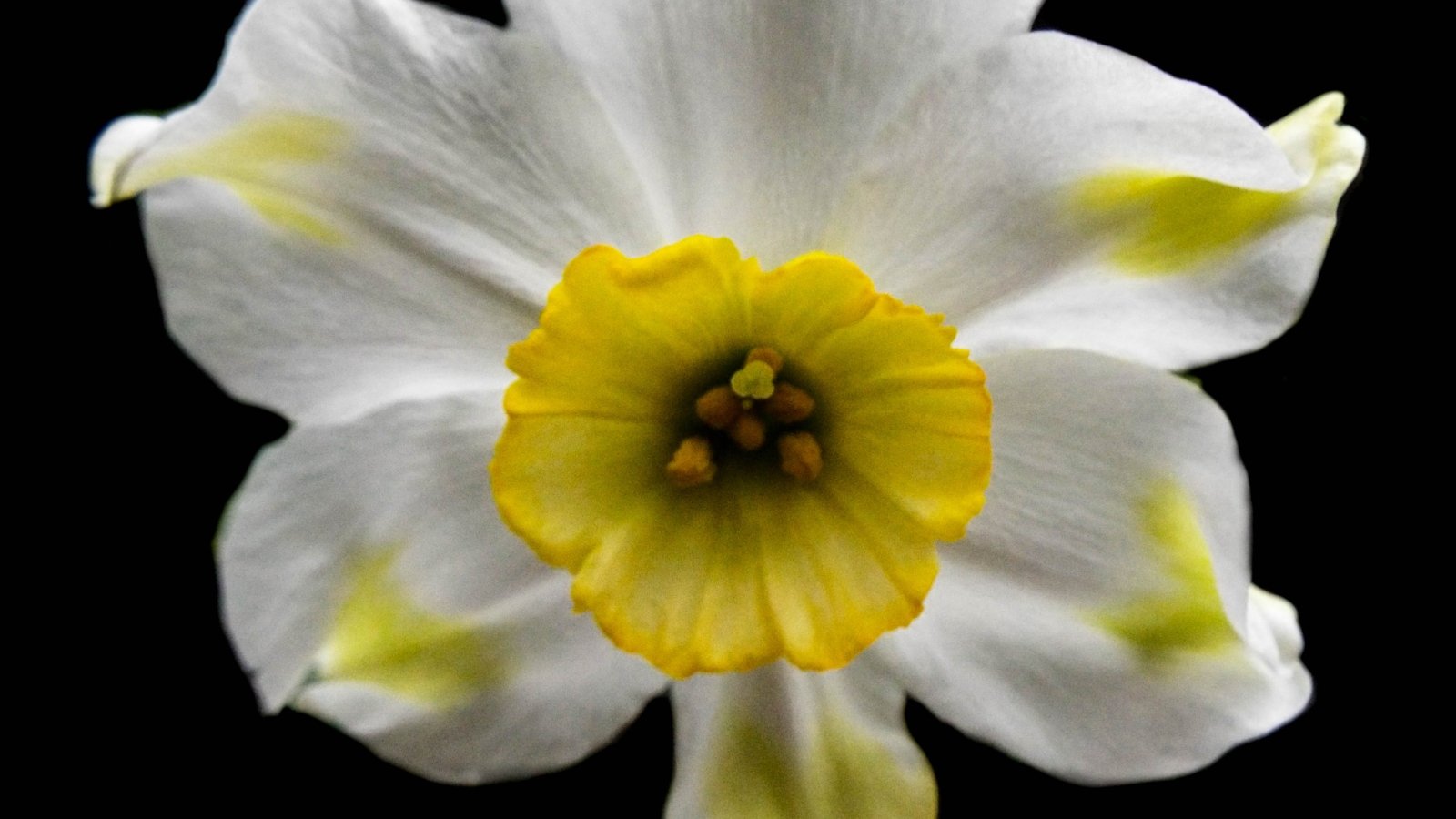

‘Sinopel’ might merely be the weirdest and wildest daffodil on this itemizing! Clear white outer petals embody a shallow central cup that ranges in color from yellow to lime inexperienced. Temperature can have an effect on greenish-hued daffodils, along with ‘Sinopel’. Warmth spring temperatures deepen the inexperienced of the central cup, whereas cooler conditions amplify the pale yellow undertones.
‘Sinopel’ blooms in mid to late spring and is among the many last daffodils to open. Tuck only a few of these bulbs in a moon yard, the place they’ll complement totally different white and inexperienced annuals.
‘Thalia’
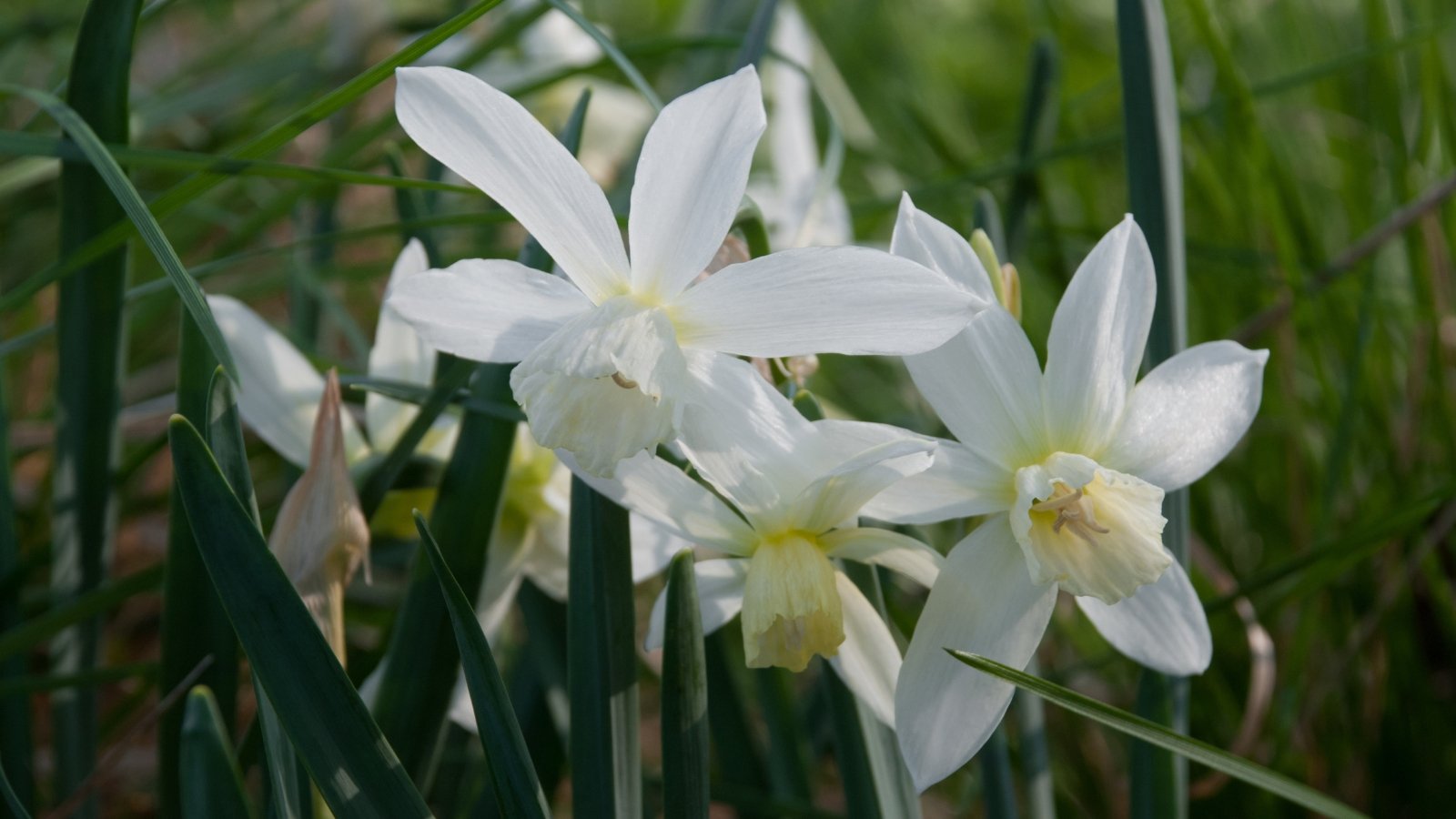

A wild species native to rocky, semi-wooded areas all through Europe, Narcissus triandrus is known for his or her swept-back petals and nodding flowerheads. Cultivar ‘Thalia’ is a chic, pure white daffodil with a sweet fragrance. Slim, grass-like stems are blue-green.
‘Thalia’ may very well be nestled into rock and alpine gardens, equipped it would get a great deal of water all through scorching stretches. Blooming in mid to late spring, this daffodil would even be the correct complement to Virginia bluebells.
‘Trepolo’
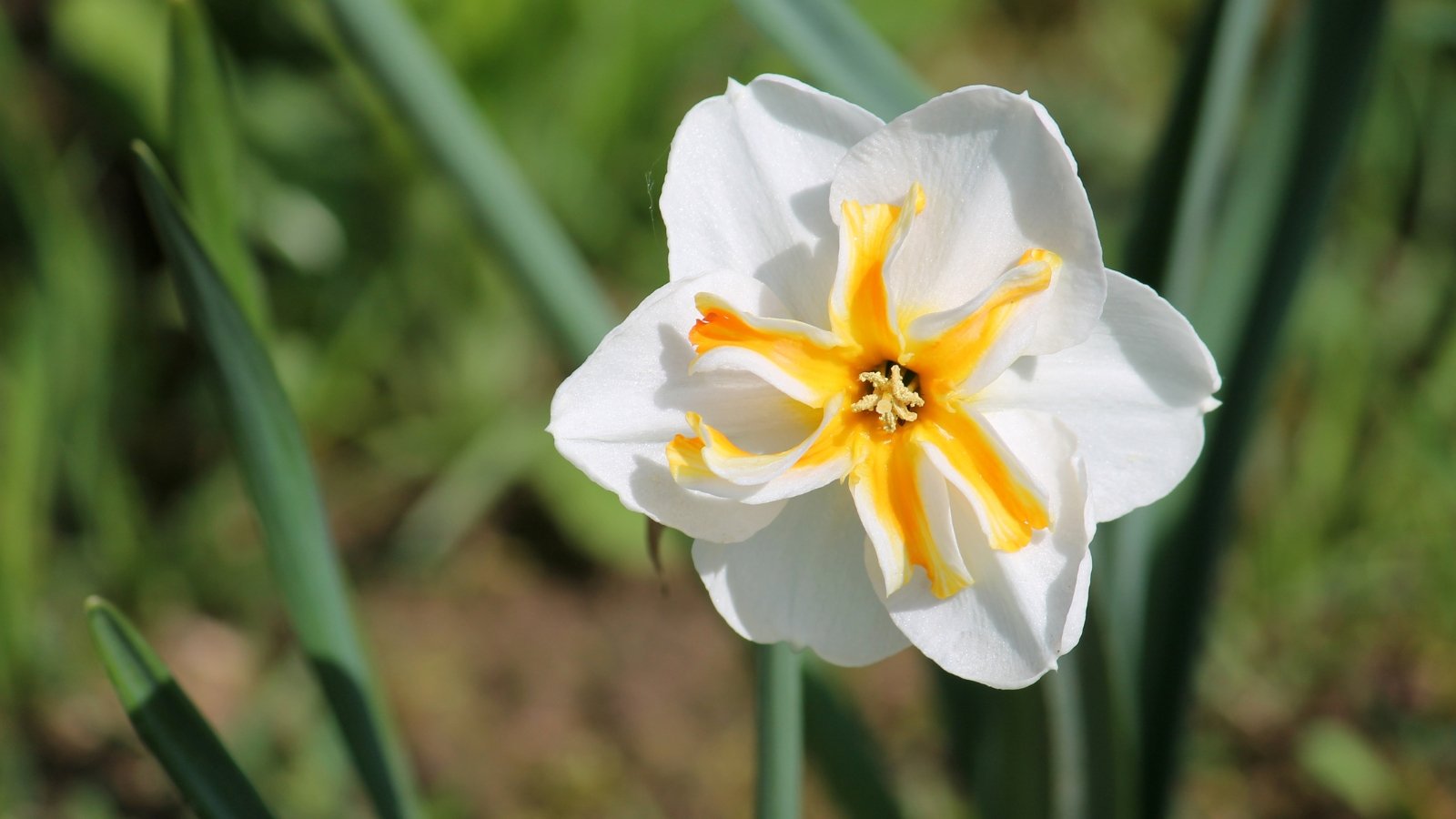

So not usually do you see a patterned daffodil inside the yard! ‘Trepolo’ choices whimsical stripes that virtually look painted on. The petals of the break up inside corona are barely twisted and have a daring stripe of orange down each one. The outer petals are clear white. This unusual daffodil is barely fragrant and blooms in mid spring.
‘White Medal’
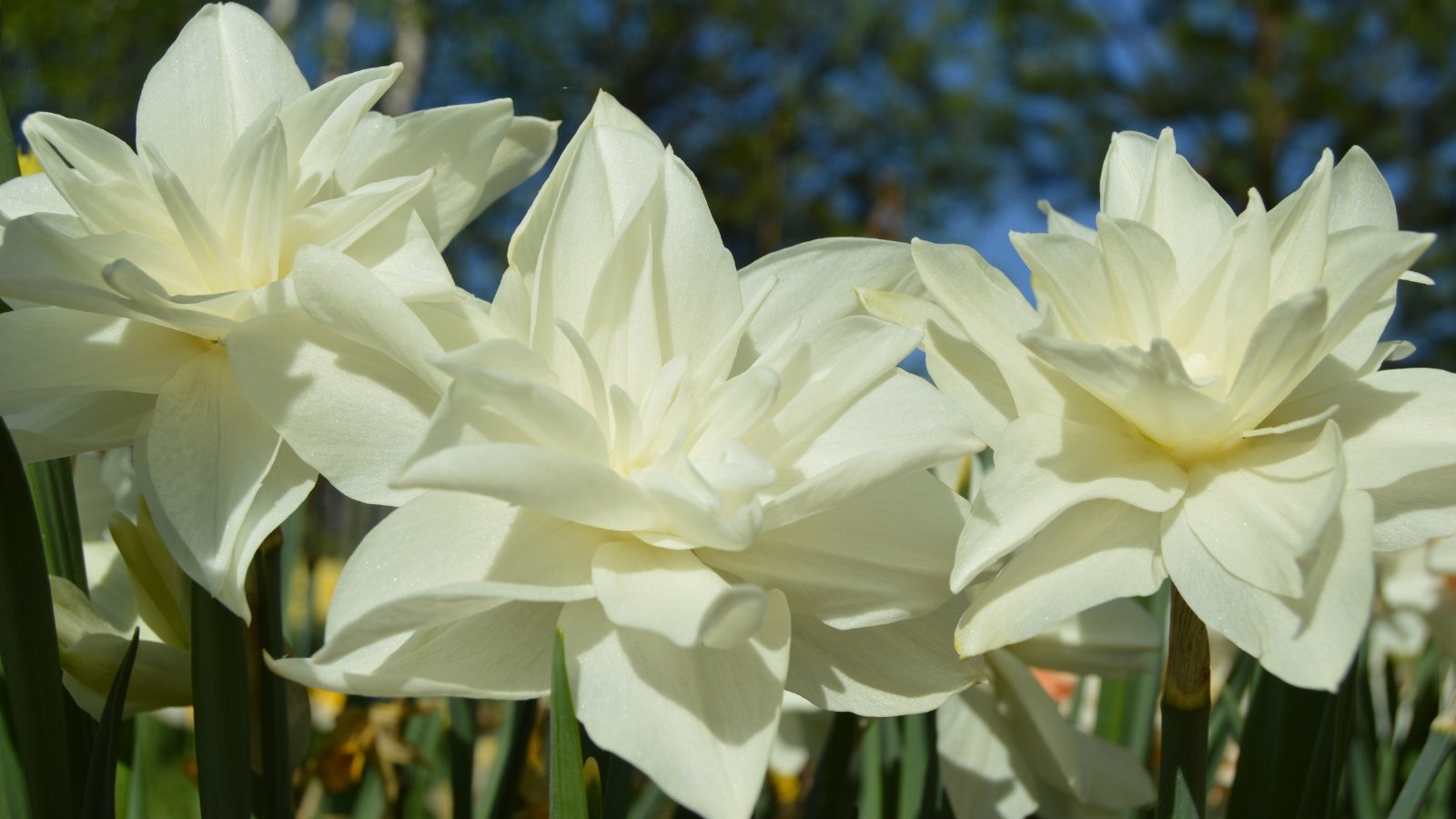

The luxurious, 4.5-inch big flowers of ‘White Medal’ make this important daffodil, notably for floral designers. Tall stems and pure white, double-flowering blooms make this a particularly elegant scale back flower. ‘White Medal’ blooms in late spring and naturalizes freely. Do this daffodil as a mass planting under a spring flowering tree, like a redbud or cherry.
‘White Petticoat’
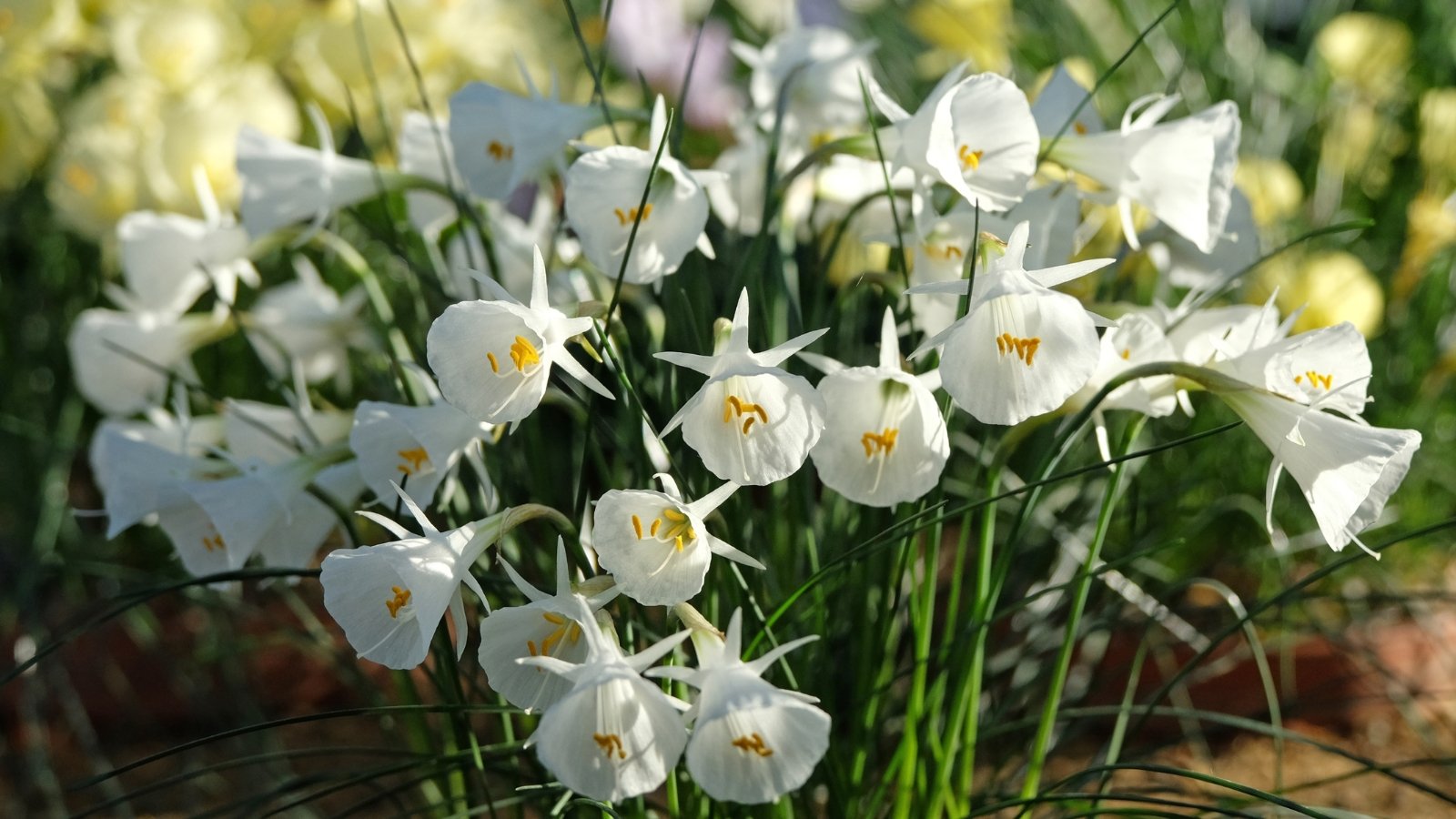

A cousin of the beforehand talked about Narcissus romieuxii, Narcissus bulbocodium is native to the meadows and rocky hillsides of southwestern Europe. ‘White Petticoat’ choices the an identical bell-shaped flowers and paper-thing petals as ‘Julia Jane’, nonetheless this choice is a creamy white. ‘White Petticoat’ stands no elevated than 10 inches tall and blooms in early and mid spring.
[ad_2]
Provide hyperlink
